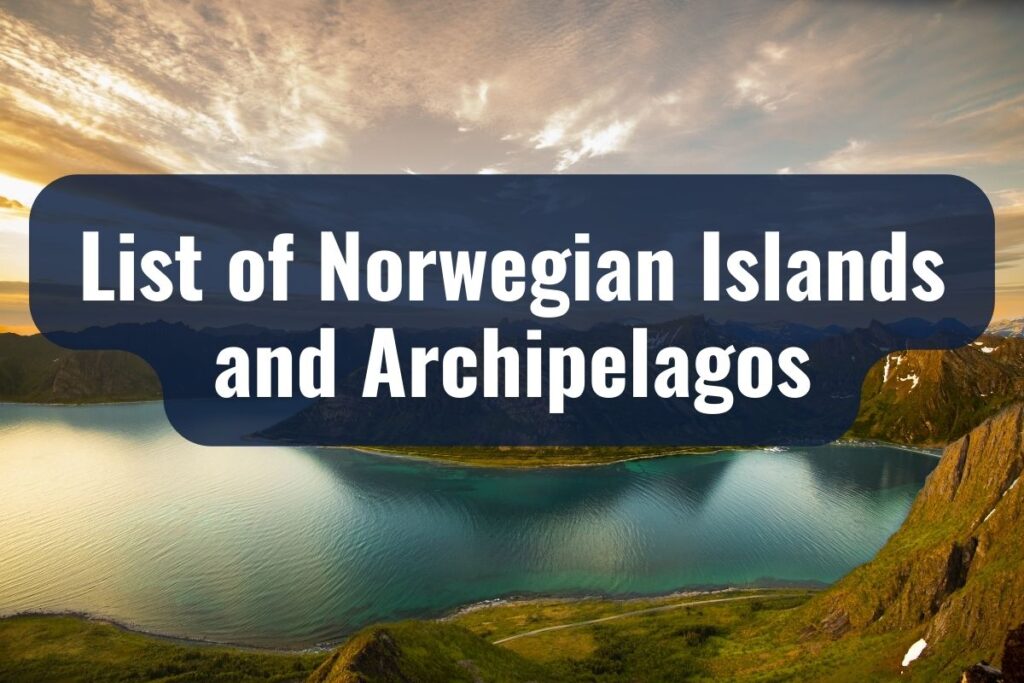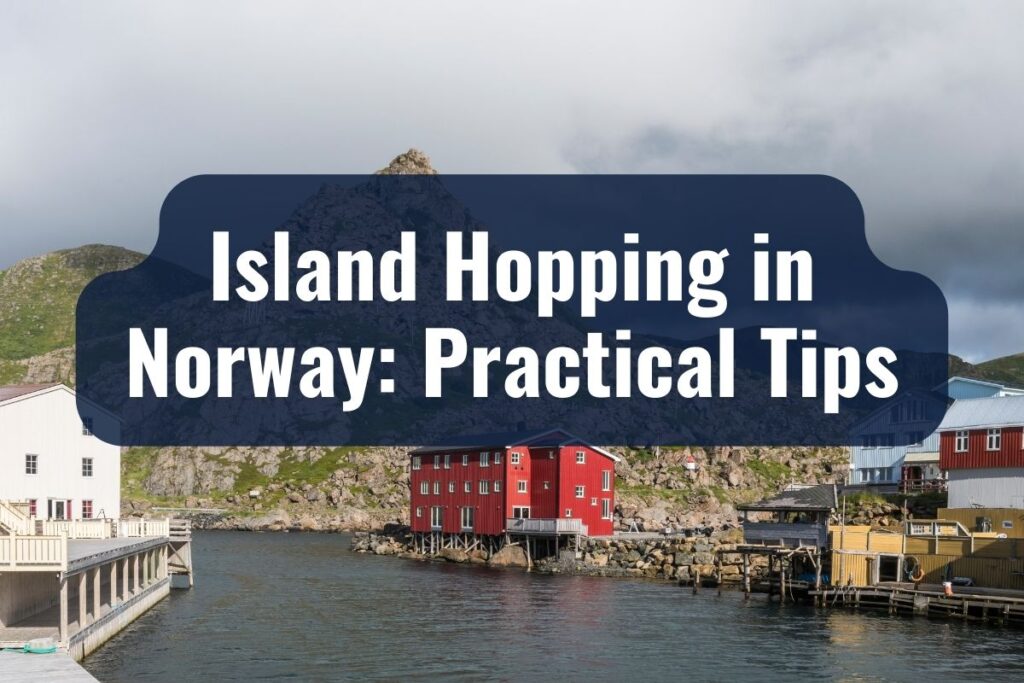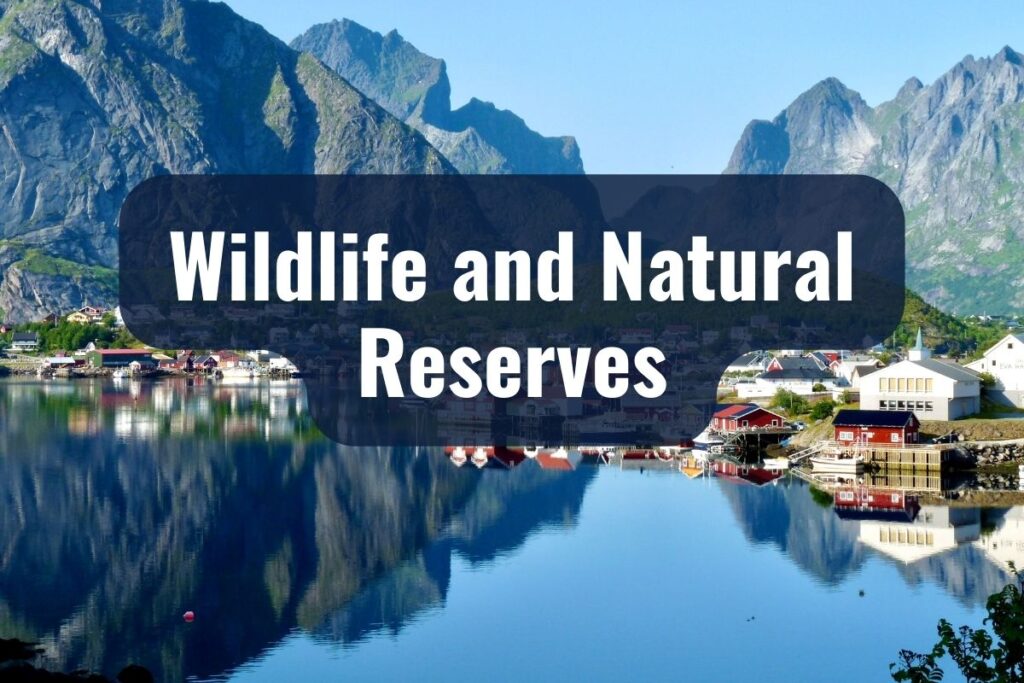Norway is home to an extraordinary array of islands, each with its own unique character and charm. From the Arctic wonders of Svalbard in the far north to the serene beauty of the Hvaler Islands in the south, Norway’s islands are as diverse as they are numerous.
This guide invites you to embark on a journey through the Norwegian Archipelago, exploring the enchanting islands that dot the coast of one of Europe’s most picturesque countries.
Key Takeaways
- Norway’s islands offer diverse landscapes, from the Arctic Svalbard to tranquil southern archipelagos.
- The islands have a rich historical background, from Viking heritage to Hanseatic trade.
- Major islands like Lofoten and Senja provide unique cultural and natural experiences.
- Lesser-known islands such as Røst and Vega are hidden gems with distinctive attractions.
- Practical tips for island hopping include using ferries, planning for the season, and choosing sustainable accommodations.
- Island culture is deeply rooted in fishing, traditional practices, and unique local festivals.
- The islands are sanctuaries for diverse wildlife and host several natural reserves and national parks.
- Responsible tourism, including sustainable practices and supporting local communities, is essential for preserving these islands.
List of Norwegian Islands and Archipelagos

Norway’s vast coastline is dotted with a plethora of islands, each boasting its own unique landscape and cultural heritage. From the Arctic grandeur of Svalbard to the tranquil shores of the Hvaler Islands, these islands offer a myriad of experiences for the curious traveler. Let’s embark on a journey to some of Norway’s most significant and captivating islands and archipelagos.
| Island/Archipelago | Key Features | Popular Activities |
| Svalbard | Arctic landscapes, wildlife | Polar exploration, dog sledding |
| Lofoten Islands | Scenic beauty, fishing villages | Fishing, kayaking, hiking |
| Vesterålen Islands | Diverse landscapes, cultural richness | Whale watching, hiking, cultural events |
| Senja | Varied natural beauty | Outdoor activities, scenic drives |
| Hvaler Islands | Beautiful beaches, sunny climate | Beach activities, exploring nature reserves |
Svalbard
Geographic Marvels: Located well within the Arctic Circle, Svalbard is a place of stark, rugged beauty. Its landscape is a dramatic mix of glaciers, mountains, and polar deserts, offering a glimpse into a world of extreme natural phenomena.
Wildlife and Exploration: Svalbard is a haven for wildlife enthusiasts, home to polar bears, reindeer, and myriad seabird species. It’s also a base for Arctic exploration, with opportunities for dog sledding, glacier hiking, and witnessing the mesmerizing Northern Lights.
Lofoten Islands
Scenic Splendor: The Lofoten Islands are renowned for their breathtaking scenery, where towering mountains plunge dramatically into the crystal-clear waters of the Norwegian Sea.
Cultural Hotspot: These islands are not just a natural paradise but also a cultural treasure trove. With picturesque fishing villages like Reine and Henningsvær, the Lofoten Islands offer a blend of traditional and modern Norwegian life.
Tourist Activities: Visitors can engage in activities like fishing, kayaking, and hiking. The islands are also a favorite among photographers and nature lovers, thanks to their stunning landscapes and the midnight sun.
Vesterålen Islands
Diverse Landscapes: The Vesterålen Islands are characterized by their varied landscapes, from serene beaches to lush valleys and imposing mountain peaks.
Whale Watching and Hiking: These islands are a prime spot for whale watching, with regular sightings of orcas and humpback whales. The numerous trails and coastal paths offer excellent opportunities for hiking and birdwatching.
Cultural Experiences: The Vesterålen Islands also boast a rich cultural scene, with art galleries, museums, and festivals celebrating the local heritage and arts.
Senja
Natural Beauty: Senja, often referred to as ‘Norway in miniature’, encapsulates the country’s diverse natural beauty. From fjords and forests to mountains and moorlands, Senja is a microcosm of Norwegian landscape.
Outdoor Adventures: The island is perfect for outdoor activities such as fishing, kayaking, and mountain biking. The National Tourist Route on Senja offers stunning viewpoints and architectural stops along the way.
Hvaler Islands
Beach Haven: The Hvaler Islands are known for their beautiful beaches and sunny climate, making them a popular summer destination.
Nature and History: The archipelago is also home to a national park, showcasing rich biodiversity and geological features. Historical sites, including ancient rock carvings, add to the islands’ allure.
Lesser-Known Gems
While the major Norwegian islands like Svalbard and Lofoten often steal the spotlight, Norway’s coast is dotted with numerous lesser-known islands, each brimming with unique charm and unspoiled beauty. These hidden gems offer a more tranquil, intimate experience of Norway’s island culture and nature. Let’s journey through some of these enchanting, lesser-known Norwegian islands.
Røst: A Seabird Haven
Birdwatcher’s Paradise: Røst, located at the edge of the Lofoten archipelago, is a flat, windswept island known for its incredible birdlife. It’s home to one of the largest seabird colonies in the Nordic region, making it a must-visit for ornithologists and nature lovers.
Rich Fishing Tradition: The island has a deep-rooted fishing culture, with its community largely dependent on the seasonal cod fisheries. This tradition adds a vibrant, authentic character to the island, especially during the fishing season.
Vega: A UNESCO World Heritage Site
Cultural Landscape: The Vega Archipelago, with its over 6,500 islands, was granted UNESCO World Heritage status for its unique way of life that has sustained for centuries, particularly the eider duck farming practices.
Natural Beauty and Activities: Besides its cultural significance, Vega offers beautiful landscapes, from sheltered bays to gentle hills, perfect for hiking, kayaking, and exploring the coastal heritage.
Utsira: Norway’s Smallest Municipality
Charming Isolation: Utsira, a small island community west of Haugesund, stands out for its quaint charm and sense of isolation. With only about 200 inhabitants, it offers a peaceful retreat from the hustle of urban life.
Art and Birdlife: The island is known for its vibrant street art scene and is also a significant spot for birdwatching, with many rare species observed here.
Træna: An Arctic Circle Gem
Arctic Circle Beauty: Situated just on the Arctic Circle, Træna is known for its dramatic landscapes and ancient history, with evidence of human settlement dating back over 9,000 years.
Festival and Sea Caves: It hosts the famous Træna Festival, attracting music lovers from all over. The island’s sea caves and clear waters also offer unique kayaking and diving experiences.
Kvitsøy: An Archipelago of Peace
Tranquil Beauty: Kvitsøy, located in Rogaland county, is a cluster of islands known for their tranquil atmosphere and picturesque scenery. It’s a perfect spot for those seeking peace and relaxation.
Lighthouse and Marine Life: The island features a historic lighthouse, offering stunning views. The surrounding waters are rich in marine life, ideal for fishing and boating enthusiasts.
Historical Background of Norwegian Islands
The history of Norway’s islands is as captivating as the landscapes themselves. These islands have been inhabited for thousands of years, with evidence of early human settlement dating back to the Stone Age. Over the centuries, they have witnessed the comings and goings of various cultures and peoples, each leaving an indelible mark on the land and its communities.
The Viking Era and Beyond
The Viking Legacy: The Norwegian islands were crucial during the Viking Age, serving as bases for voyages, trade, and exploration. Islands like the Lofoten and Vesterålen were centers of power and strategic locations for Viking chieftains.
Medieval Times: After the Viking era, many of these islands continued to play significant roles in Norway’s history. Monasteries, churches, and coastal fortifications were built, some of which still stand as historical landmarks today.
The Hanseatic Influence: In the Middle Ages, the Hanseatic League, a powerful economic and defensive alliance of merchant guilds, established posts on several Norwegian islands. This brought about a flourishing of trade and cultural exchange, leaving a lasting impact on the local architecture and urban landscapes.
Cultural and Historical Significance of Key Islands
Svalbard’s Global Importance: Svalbard, though more remotely located, has a rich history involving whaling, coal mining, and polar exploration. Today, it holds global significance with the Svalbard Global Seed Vault and as a center for Arctic research.
Lofoten’s Fishermen and Artists: The Lofoten Islands have a long-standing tradition of fishing, particularly for Arctic cod. This tradition has not only shaped the local economy but also inspired a wealth of artistic expression, evident in the islands’ art galleries and museums.
Rural Traditions on Lesser-Known Islands: Smaller islands like Røst and Vega have preserved traditional Norwegian lifestyles more intimately. Their historical significance lies in the continuation of age-old practices like sheep farming and bird hunting, offering a glimpse into Norway’s rural past.
Island Hopping in Norway: Practical Tips

Island hopping in Norway is an adventure that offers an unparalleled opportunity to experience the country’s stunning natural beauty and rich cultural heritage. However, navigating through Norway’s extensive archipelago requires some planning and knowledge. Here are practical tips to ensure a smooth and enjoyable island-hopping journey.
Transportation: Getting Around the Islands
Ferries and Boats: The most common way to travel between islands is by ferry. Norway’s extensive ferry network is reliable and offers routes to most major and many smaller islands. Some routes may require advanced booking, especially during peak tourist seasons.
Bridges and Tunnels: Some islands are connected to the mainland or to each other via bridges and tunnels. This makes access easier and allows for more spontaneous travel plans.
Charter Boats: For a more personalized experience, consider chartering a boat. This option is particularly appealing for visiting remote islands or for those interested in fishing and sightseeing at their own pace.
Best Times to Visit
Summer Season: The best time for island hopping in Norway is during the summer months, from late May to early August. This is when the weather is most favorable, and many of the ferry routes operate with increased frequency.
Off-Peak Travel: For those seeking fewer crowds, consider traveling during the shoulder seasons in late spring or early autumn. The weather can still be pleasant, and you’ll experience the islands in a more tranquil setting.
Accommodation Options
Hotels and Resorts: Larger islands often have a range of accommodation options, from luxury resorts to cozy hotels.
Cottages and Cabins: Renting a cottage or cabin is a popular option, offering a more authentic and intimate experience of island life.
Camping: For the more adventurous, many islands offer camping facilities. Some even allow wild camping, but it’s important to adhere to local regulations and respect the natural environment.
Tips for a Seamless Experience
- Plan Ahead: Especially in high season, it’s advisable to book accommodation and ferry tickets in advance.
- Pack Appropriately: Weather in Norway can be unpredictable, so pack layers and waterproof gear.
- Stay Informed: Keep an eye on weather forecasts and ferry schedules, as these can change, particularly in remote areas.
- Respect Local Customs: Each island has its own culture and way of life. Be respectful of local customs and traditions.
Island Culture and Traditions
The culture and traditions of Norway’s islands are as varied and captivating as their landscapes. These islands, each with their own distinct identity, offer a window into the rich tapestry of Norwegian heritage. From time-honored fishing practices to unique local festivals, the cultural fabric of these islands is a mosaic of history, art, and community life.
Traditional Island Lifestyles
Fishing Communities: In many islands, especially in the north like the Lofoten and Vesterålen, fishing is not just an occupation but a way of life. These communities revolve around the seasonal fishing cycles, particularly the winter cod fishing season, which has been a cornerstone of their culture for centuries.
Agriculture and Sheep Farming: On islands such as Røst and Vega, traditional practices like sheep farming are still prevalent. These activities are not only economic pursuits but also integral to maintaining the cultural landscape and local customs.
Local Cuisine: A Taste of the Islands
Seafood Delicacies: Given the coastal location of these islands, seafood dominates the local cuisine. Delicacies like dried cod from Lofoten, known as ‘stockfish’, and fresh salmon are not only staples but also part of the culinary heritage.
Seasonal and Local Ingredients: The use of fresh, local ingredients is a hallmark of island cuisine. Berries, mushrooms, and wild herbs are often foraged and used in traditional recipes, offering a unique and authentic taste of the islands.
Festivals and Cultural Events
Midsummer Celebrations: Many islands have vibrant midsummer festivities, where locals and visitors alike gather to celebrate the longest day of the year with bonfires, music, and traditional dances.
Music and Art Festivals: Islands like Træna and Hvaler host annual music and arts festivals, showcasing local talent and drawing visitors from across the globe. These events are a celebration of the islands’ cultural vitality.
Preserving Heritage and Embracing Change
Museums and Historical Sites: Several islands have museums and historical sites dedicated to preserving and sharing their unique histories and traditions. These range from Viking relics to exhibitions on local fishing and farming practices.
Adapting Traditions: While deeply rooted in tradition, these island communities are not static. They continuously adapt, blending old customs with new influences, ensuring their cultural heritage thrives in the modern world.
Wildlife and Natural Reserves

Norway’s islands are not only a feast for the eyes but also a haven for an array of wildlife and natural habitats. From the Arctic species of Svalbard to the diverse ecosystems of the southern archipelagos, these islands serve as critical sanctuaries for wildlife and natural reserves. Let’s delve into the rich natural tapestry that these islands safeguard.
Unique Flora and Fauna
Arctic Wildlife: In the northern islands like Svalbard, the wildlife is adapted to the harsh Arctic conditions. Polar bears, Arctic foxes, and walruses are some of the iconic species that can be seen here.
Birdlife: The Norwegian islands are renowned for their birdlife. Islands like Røst and Vega are vital breeding grounds for seabirds such as puffins, gannets, and eider ducks. Birdwatching here can be a spectacular experience, especially during nesting season.
Marine Life: The surrounding waters of these islands are teeming with marine life. Whales, dolphins, and a variety of fish species are commonly spotted, making these islands a fantastic destination for wildlife enthusiasts.
National Parks and Protected Areas
Svalbard’s Nature Reserves: Svalbard hosts several nature reserves and national parks, protecting its unique Arctic environment. These areas are crucial for research and conservation efforts, helping to preserve the fragile Arctic ecosystem.
Coastal Wetlands and Forests: On the mainland and larger islands, national parks protect diverse habitats like coastal wetlands, ancient forests, and alpine ecosystems. These parks offer trails and guided tours for visitors to experience Norway’s natural beauty responsibly.
Conservation Efforts
Sustainable Practices: Conservation is a key aspect of life on the islands. Efforts are made to ensure sustainable fishing and tourism practices, protecting the natural resources for future generations.
Environmental Education: Many islands have visitor centers and educational programs aimed at raising awareness about the importance of conservation and the unique ecosystems of the islands.
Experiencing Norway’s Natural Wonders
Guided Tours and Hiking: Exploring these natural reserves often involves guided tours, which offer insights into the local ecosystems and wildlife. Hiking and boat tours are popular ways to experience the beauty of these areas.
Photography and Observation: For those interested in photography or simply observing nature, these islands provide countless opportunities to capture stunning landscapes and encounter wildlife in their natural habitats.
Responsible Tourism and Conservation Efforts
As visitors explore the breathtaking landscapes and rich cultures of Norway’s islands, it’s crucial to recognize the importance of responsible tourism and conservation efforts. These islands are not just travel destinations; they are delicate ecosystems and homes to local communities. Sustainable practices ensure that the beauty and integrity of these islands are preserved for future generations.
Sustainable Travel Practices
Minimizing Environmental Impact: Tourists are encouraged to minimize their environmental footprint by using eco-friendly transportation, reducing waste, and conserving water and energy. Choosing accommodations and tour operators that prioritize sustainability can significantly contribute to conservation efforts.
Respect for Wildlife: When encountering wildlife, it’s important to maintain a safe distance and avoid disturbing their natural behavior. Feeding wildlife or encroaching on their habitats can have detrimental effects on both the animals and the environment.
Supporting Local Communities
Promoting Local Economies: By patronizing local businesses, visitors can help sustain the island economies. This includes choosing locally owned accommodations, eating at local restaurants, and purchasing crafts and products made by island artisans.
Cultural Sensitivity: Understanding and respecting the local culture, traditions, and customs is vital. This includes being mindful of local norms, participating respectfully in cultural events, and seeking permission before photographing people.
Environmental Education and Awareness
Learning Opportunities: Many islands offer educational tours and visitor centers that provide insights into the local ecosystems, cultural history, and conservation efforts. Engaging in these learning experiences can deepen visitors’ understanding and appreciation of the islands.
Raising Awareness: Tourists can play a role in conservation by sharing their experiences and knowledge about the islands’ environmental and cultural significance. Promoting responsible travel practices among peers can have a ripple effect in fostering sustainable tourism.
Active Participation in Conservation
Volunteer Opportunities: Some islands offer opportunities for visitors to participate in conservation projects, such as beach clean-ups, wildlife monitoring, or habitat restoration activities.
Supporting Conservation Initiatives: Donations and support to local conservation organizations and initiatives can make a significant impact. These contributions help fund important projects that protect the islands’ natural and cultural heritage.
Additional Resources
- Visit Norway: The official travel guide to Norway provides detailed information on destinations, including the islands, with tips on accommodation, activities, and transportation.
- The Norwegian Trekking Association (DNT): For those interested in hiking and outdoor activities, DNT offers resources on trails, cabins, and guided tours of Norway’s natural landscapes.
- Svalbard’s Official Travel Guide: A dedicated site for those planning to visit Svalbard, offering practical advice on tours, safety, and unique Arctic experiences.
Related: Bouvet Island in Norway


